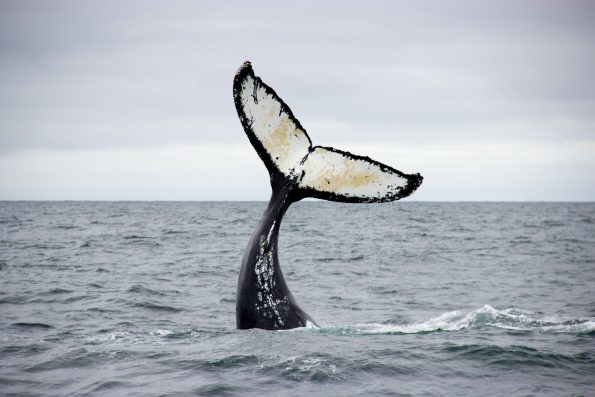A Whale Without A Tail Was Spotted Off The Coast Of Washington, And Experts Believe It Got Injured In Fishing Gear

Off the coast of Washington state, a humpback whale missing its tail was spotted on July 23. Experts believe it lost its tail after becoming entangled in some fishing gear. While the whale has managed to adapt so far, it will likely die of starvation and exhaustion soon.
The flukes of the humpback whale (Megaptera novaeangliae) are used for propulsion when swimming, making them vital to the species’ survival. Oceans are full of fishing lines and other debris, so it’s not uncommon for humpbacks to become entangled in them.
“It’s very disturbing,” said Jessica Farrer, the lead responder and research director at The Whale Museum located in Friday Harbor, Washington. “It’s such a big, majestic animal, and it’s missing a very important part of its body, and on some level, we know that we are the ones—humans, that is—that caused it.”
Aside from being a natural history museum, the institute helps respond to sightings of distressed or stranded marine mammals and educates whale watchers on best practices.
So, Farrer is no stranger to injured humpbacks, but she had never seen anything as heartbreaking as this before.
Initially, the whale, which has been named Catalyst, was observed on July 5 on the east side of Swindle Island. According to the San Juan County Marine Mammal Stranding Network, it was spotted for a second time on July 10 near Campbell River.
On July 23, it was seen again off the coast of Lopez Island—a drone captured footage of the humpback using its pectoral fins to push itself through the water.
After attempting to use its peduncle muscle to dive, it revealed its missing tail. Since the first sighting, Catalyst has traveled around 370 miles despite the injury.
“It was traveling at a normal speed, around [3.5 to 4.5 mph], it was diving, and it was doing what humpbacks do, and it managed to make it from Campbell River all the way down to the San Juan islands,” said Farrer. “Talk about the little whale that could.”

Michelle – stock.adobe.com – illustrative purposes only
Whales rely on their tail flukes to perform deep dives to search for food and communicate with other whales through tail slaps.
Although Catalyst can swim, the whale probably will be unable to forage efficiently, leading to its starvation. The new swimming technique it has adopted will also cause the whale to tire quickly.
One of the biggest hazards to large whales worldwide, including humpbacks, is entanglement in fishing gear. Other threats are collisions with boats and the impacts of climate change on their food supply.
At some point in their lives, most humpback whales experience entanglement but can often free themselves. It is unclear exactly how many humpbacks die after becoming entangled.
But according to estimates from The International Whaling Commission, 300,000 whales and dolphins die from entanglement each year.
Sign up for Chip Chick’s newsletter and get stories like this delivered to your inbox.
More About:Animals